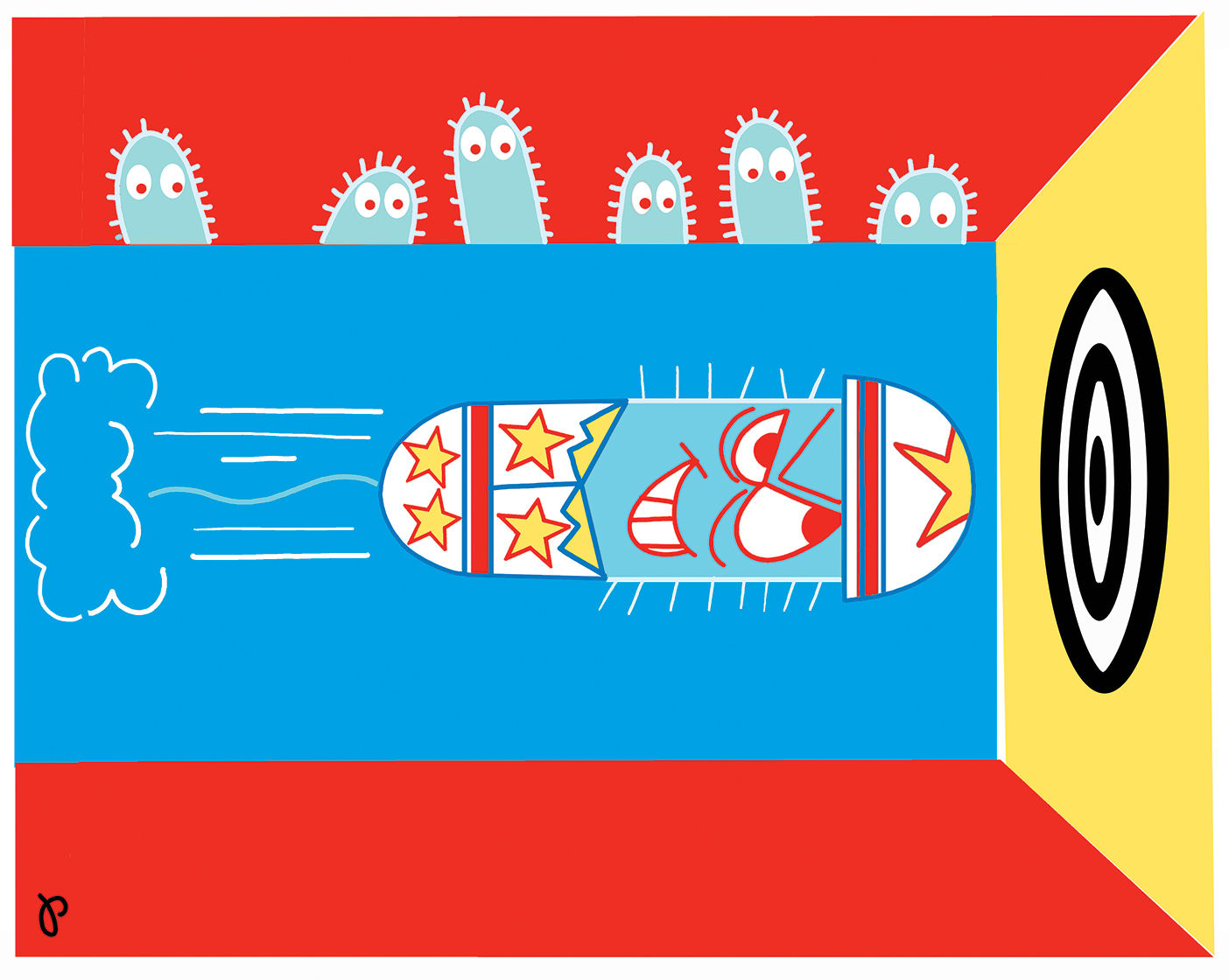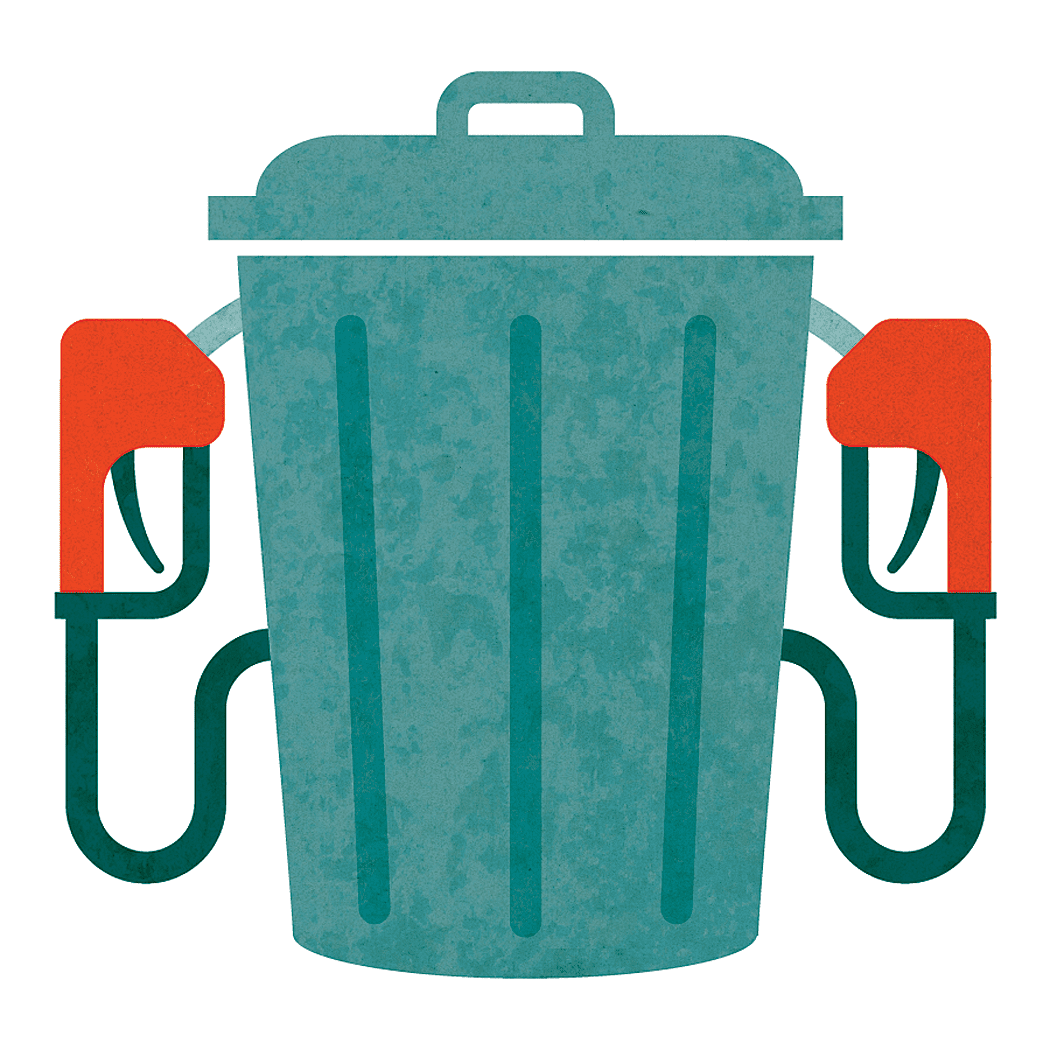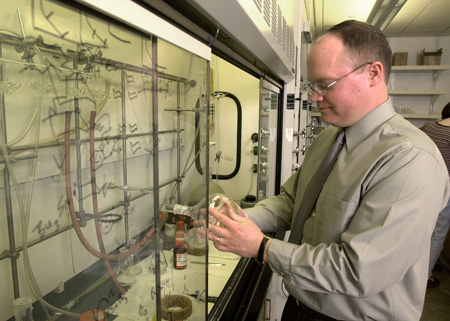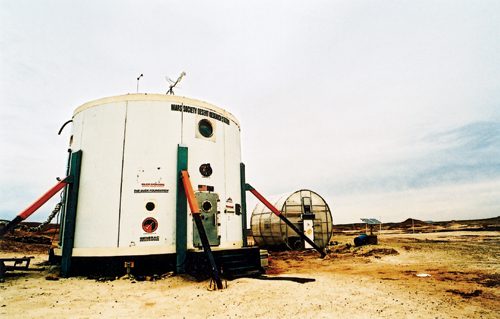With funding from NASA, BYU researchers work to find out what it takes to kill bacterial hitchhikers.

On the face of it, the experiment would seem to appeal to both the scientist’s thirst for knowledge and the inner 11-year-old’s appetite for destruction: What happens if you accelerate a bacterial spore to near the speed of sound and slam it into a solid surface?
Anticlimactically—and fascinatingly—the result is nothing. So discovered BYU chemistry professor Daniel E. Austin (BS ’98) and two former graduate students when, with NASA funding, they set out to determine bacteria’s ability to withstand high-speed impacts. “There should be a velocity at which they’ll splat and die,” says Austin, “but we haven’t reached it.”
With students Brandon L. Barney (PhD ’15) and Sara Nielson Pratt (BS ’11, MS ’13) as lead authors, the team published the results of the crash test in the journal Planetary and Space Science. For the experiment they created a vacuum system to suck in and focus the individual bacteria spores into a narrow column of air streaming up to 670 miles per hour—before coming to a very abrupt stop. “They simply bounce off the surface and roll around,” says Austin. “And they’re just fine.”
“There should be a velocity at which they’ll splat and die, but we haven’t reached it.” —Daniel Austin
Bacteria, it turns out, are some of the toughest living things known to man—surviving in intense heat and cold, deep in the earth’s crust and even in space.
It’s that last scenario, and the potential for bacterial hitchhikers to survive a crash landing, that has NASA’s attention. “NASA’s always concerned about what’s called ‘planetary protection,’” says Austin. “We don’t want to contaminate any other planet in the solar system with bacteria from Earth. It would be unfortunate if we went to Mars and discovered E. coli that we brought with us. And . . . we don’t want anything that could exist on another planet to come back to the Earth and contaminate us.”
Austin and his students are now teaming up with microbiology and molecular biology professor Richard A. Robison (BS ’78, MS ’80, PhD ’88) to create an even tougher test for the hardy microbes. Their goal? Accelerate the spores at 1 kilometer per second (2,200 miles per hour)—speeds at which an impact would approximate a crash landing on a planet. When they do, the team is (pretty) sure, the bacteria will splat.











